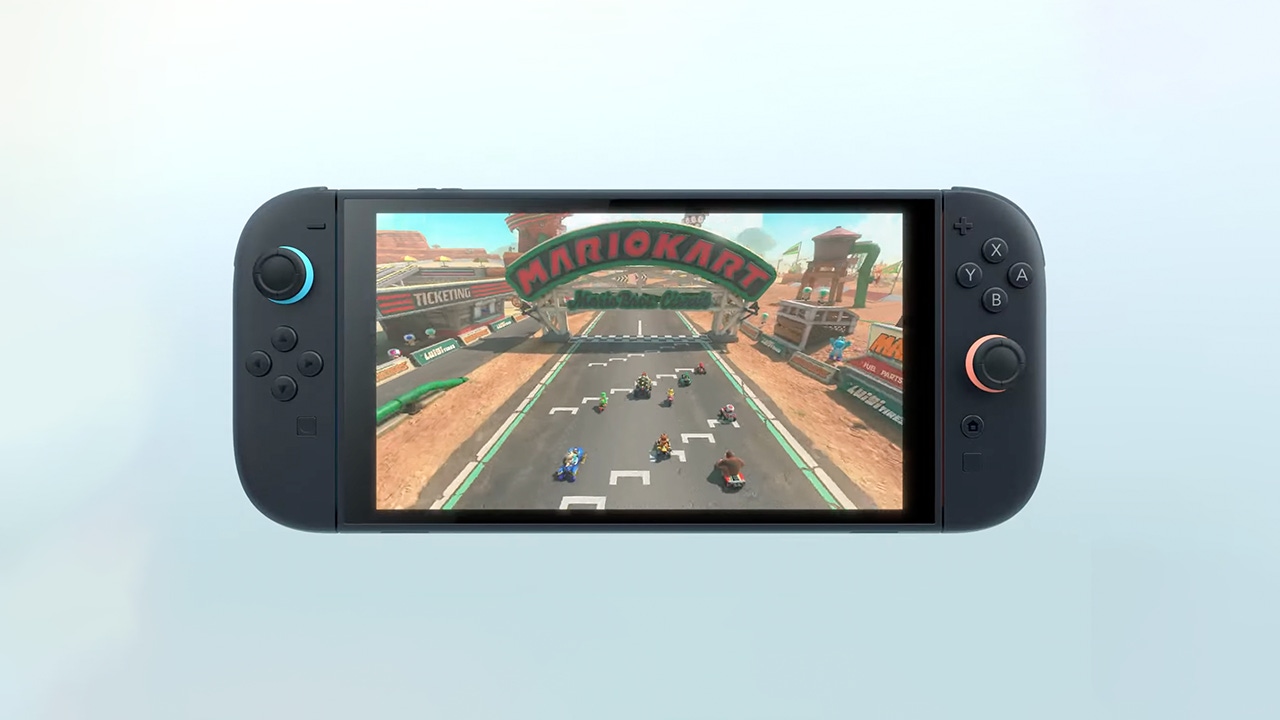Trending
Opinion: How will Project 2025 impact game developers?
The Heritage Foundation's manifesto for the possible next administration could do great harm to many, including large portions of the game development community.
A strikingly familiar device still shrouded in mystery.

The wait is over. Nintendo has finally pulled back the veil on the Switch 2, its successor to the immensely popular Nintendo Switch. It's currently unclear how much the console will cost, although Nintendo indicated it will hit shelves at some point in 2025.
Developers not privy to Nintendo's plans have been waiting on pins and needles for details of what new hardware features its next console might sport. Since the Nintendo Wii, the company has prioritized unique technology like motion sensor controls, second-screens, and portability over graphical and computing power. This time around? Well, it looks like we'll be getting more of the same–but better.
In a brief announcement video (embedded below), Nintendo showed a device that looks like a larger version of the Switch with a few added bells and whistles. The Japanese company didn't share concrete tech specs, but we can see the Switch 2 features redesigned Joy-Con controllers that click onto the side of the console (rather than slide), a new-look kickstand and dock, a larger display, and additional ports.
Nintendo confirmed the Switch 2 will be backwards compatible with some Switch titles, but noted certain games "may not be supported or fully compatible with Nintendo Switch 2."
Software announcements were also missing from today's reveal, although we did see the Switch 2 running a mysterious version of Mario Kart in both docked and handheld mode.
The company has promised to share more details about the console at a later date. A Switch 2 focused Nintendo Direct is currently slated for April 2, 2025.
Speculation about the Nintendo Switch successor ran rampant over the last year, as developers, executives, and internet detectives with strong sleuthing skills tried to peel back how the company could top the surprise reveal of a portable console with detachable controllers in 2016. Today's reveal allows developers and publishers previously unfamiliar with Nintendo's plans to begin imagining what Nintendo has in store as it prepares to kick-start its next hardware cycle.
When the Nintendo Switch launched in 2017, its primary competition was the Xbox One and PlayStation 4 line of consoles. Xbox Game Pass and Xbox Cloud Gaming hadn't hit the market yet, and the promise of a console that could work equally well in living rooms and out on the go seemed like a big gamble.
Now, portability is on every manufacturer's mind, with Valve's Steam Deck, Sony's PlayStation Portal, and a slew of other handheld computers hitting the market. None of these devices held a candle to the Nintendo Switch's eye-popping sales numbers (Nintendo projects the console will hit 154.8 million units sold by April 2025), but their existence does challenge the house of Mario to stretch beyond the selling point of portability.
Our peers at Omdia have already pinned down some projections for the Switch 2's sales performance. Analyst James McWhirter told Game Developer the firm expects Nintendo to sell 14.7 million units during calendar year 2025.
Of course this is the company that gave us the Nintendo Ring-Con, Nintendo Labo, and Nintendo Sound Clock Alarmo. Even when it's not debuting new consoles, the company is regularly testing and launching new approaches to physical hardware.
Hopes are riding high for the Switch 2 on multiple fronts. Investors are eagerly wagging their tails at the returns new hardware could deliver for Nintendo, and developers everywhere are hoping a fresh Nintendo console—and hopefully the anticipated release of Grand Theft Auto VI on PlayStation 5 and Xbox Series X|S later in the year—can shock some life into the video game industry and offer more financial stability after two years of layoffs and studio closures.
Game Developer and Omdia are sibling organizations under Informa.
You May Also Like